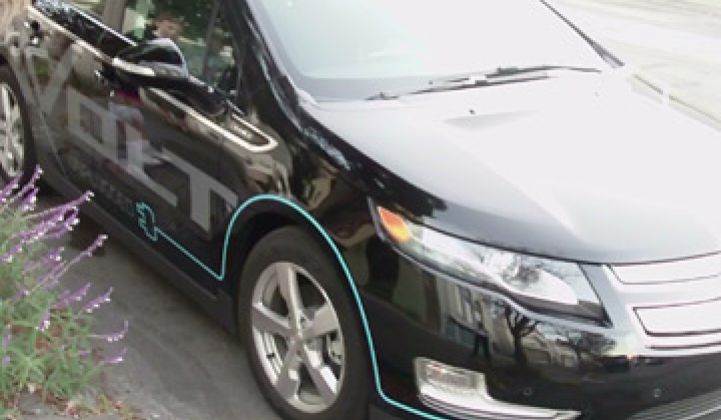The electric car industry has clamored for a case study to showcase the economics of electric cars. General Electric is giving them one.
The conglomerate said it would purchase 25,000 electric cars for its fleet. GE's global car fleet right now is 30,000 cars, so electrics will come to predominate. GE will buy 12,000 next year, including many Chevy Volts (General Motors only plans to make around 10,000 Volts through 2011, but could expand to 15,000). By 2015, half of the fleet cars will be electric.
This will likely make General Electric one of the largest owners of electric cars in the world. Walmart, UPS, and other delivery companies are converting to electric and hybrid deliver trucks, but the size of GE's fleet will be tough to match.
Fleet owners will be one of the important drivers for EVs. Nearly half of the cars sold are actually fleet cars, said Brandon Mason, Global Powertrain Lead Analyst, U.S. Auto Practice, PricewaterhouseCoopers at The Networked EV this week. It is also easier for fleet owners to incorporate technologies like high-powered charging stations or even battery swapping into the mix. Fleet cars ply circumscribed routes for the most part -- employees aren't taking them skiing on the weekend. As a result, charging stations and infrastructure can be localized.
Better Place, the battery swapping and charging guys, will launch in Israel with fleet customers. Proterra, the electric bus company, sells its buses with high-speed chargers.
Electric cars, of course, would help GE's bottom line. The company sells the WattStation charging station, but also transformers, smart grid equipment, sodium sulfur batteries and all those other components that will be required to beef up the grid for electric drive. Kevin Dasso at PG&E estimates that it will cost $150 million to $175 million to upgrade the grid for uncontrolled (i.e., peak hour) charging. Even with off-peak charging, upgrades will be needed.



